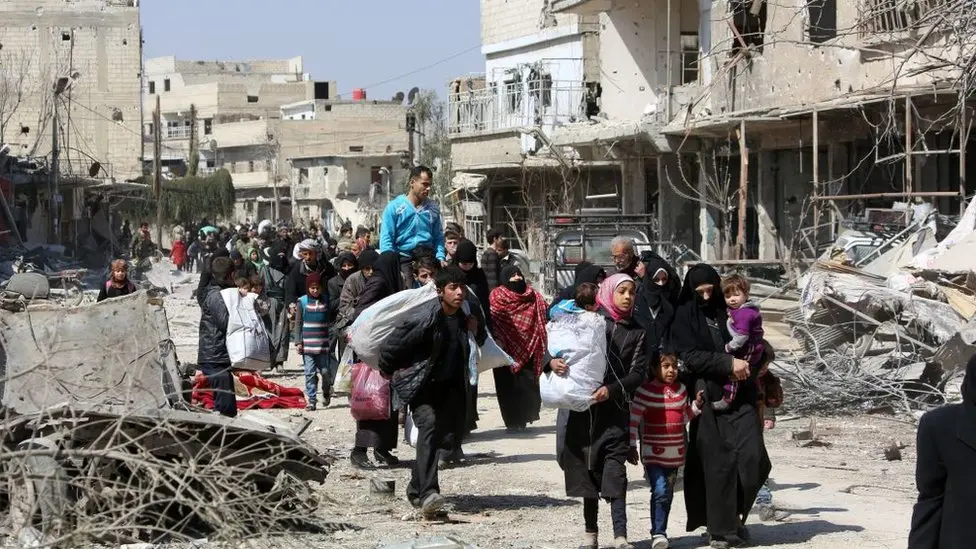The Syrian Conflict

Table of Contents
The Syrian conflict, now spanning over a decade, stands as one of the most complex and devastating crises of the 21st century. What began as a peaceful protest in 2011 has evolved into a multifaceted war, drawing in regional and global powers, displacing millions, and reshaping the Middle East. As of March 08, 2025, the conflict persists in a fragmented state, with no clear resolution in sight, yet its impact continues to reverberate far beyond Syria’s borders. Origins of the Conflict
The Syrian conflict traces its roots to the Arab Spring, a wave of pro-democracy uprisings that swept across the Arab world in 2011. In March of that year, inspired by movements in Tunisia and Egypt, Syrians took to the streets to demand political reforms, economic opportunities, and an end to the decades-long rule of the Assad family. Bashar al-Assad, who succeeded his father Hafez in 2000, responded with a brutal crackdown. Security forces opened fire on demonstrators, igniting widespread outrage and setting the stage for a broader rebellion. By late 2011, the unrest had escalated into an armed insurgency. Defectors from the Syrian military formed the Free Syrian Army (FSA), aiming to topple the Assad regime. What began as a civil uprising quickly spiraled into a full-scale civil war as opposition groups fragmented and external actors stepped in.
A Proxy War Emerges The Syrian conflict soon became a battleground for competing regional and international interests. The Assad government, backed by Russia and Iran, relied on military support, airstrikes, and Shia militias to maintain power. Russia’s intervention in 2015, including its air campaign, proved a turning point, bolstering Assad’s forces and shifting the war’s momentum in his favor.
On the other side, a diverse array of rebel groups received support from the United States, Turkey, Saudi Arabia, and other Gulf states. However, the opposition remained deeply divided, ranging from moderate factions to Islamist militias, including the powerful Hayat Tahrir al-Sham (HTS). The rise of the Islamic State (ISIS) in 2014 further complicated the conflict, drawing in a U.S.-led coalition to combat the extremist group. By 2019, ISIS had lost its territorial caliphate, but its remnants continue to pose a threat.
Turkey, meanwhile, pursued its own agenda, launching operations against Kurdish forces in northern Syria—particularly the YPG, which it views as an extension of the PKK, a designated terrorist organization. The Kurds, key allies in the fight against ISIS, established a semi-autonomous region in the northeast, adding yet another layer to the conflict’s complexity. Humanitarian Crisis and Displacement
The human toll of the Syrian conflict is staggering. Over 500,000 people have been killed, though exact figures remain disputed. More than half of Syria’s pre-war population of 22 million has been displaced: 6.7 million are internally displaced, while over 5 million refugees have fled to neighboring countries like Turkey, Lebanon, and Jordan, or beyond to Europe. Cities like Aleppo, Homs, and Raqqa lie in ruins, their cultural heritage destroyed alongside homes and infrastructure.
The war has also unleashed a humanitarian catastrophe. Millions inside Syria lack access to food, clean water, and healthcare. Chemical weapons attacks, sieges, and indiscriminate bombings—attributed to various parties—have drawn international condemnation but little accountability. The United Nations and aid organizations struggle to reach those in need amid ongoing violence and bureaucratic obstacles.
The Situation in 2025 As of March 08, 2025, the Syrian conflict has settled into a state of uneasy stalemate. Bashar al-Assad remains in power, controlling roughly two-thirds of the country with Russian and Iranian backing. Rebel-held Idlib, in the northwest, remains a hotspot, where HTS dominates and sporadic clashes with regime forces continue. Turkey maintains a presence in northern Syria, overseeing buffer zones and countering Kurdish influence. The Kurdish-led Syrian Democratic Forces (SDF) hold the northeast, supported by a small U.S. military presence, though their future remains uncertain amid shifting American priorities.
Reconstruction efforts are stalled by sanctions, a crippled economy, and a lack of political will. Syria’s currency has plummeted, and inflation has soared, leaving ordinary Syrians in dire straits. Internationally, diplomatic initiatives—like the UN-led Geneva process—have failed to produce a viable peace agreement. Assad’s regime shows no sign of relinquishing power, while opposition groups and their backers remain too fractured to mount a unified challenge.
Looking Ahead The Syrian conflict’s trajectory remains unpredictable. Could a new diplomatic breakthrough emerge, or will the war grind on as a frozen conflict? For now, the Syrian people bear the heaviest burden, caught between resilience and despair. The international community, too, faces a dilemma: how to address a crisis that has defied resolution for over 14 years.
The story of Syria is not just one of war but of survival. It’s a reminder of the costs of division, the limits of intervention, and the enduring hope—however faint—for a better future. As the world watches, the question remains: when, and how, will this chapter finally close?